#shelley and byron’s sailing trip
Explore tagged Tumblr posts
Text
Byron and Shelley chronicle their 1816 sailing trip in Lake Geneva — Days 8/9, June 29th/30th.
Percy Shelley, History of a Six Weeks' Tour:
“On Saturday the 30th of June we quitted Ouchy, and after two days of pleasant sailing arrived on Sunday evening at Montalegre.”

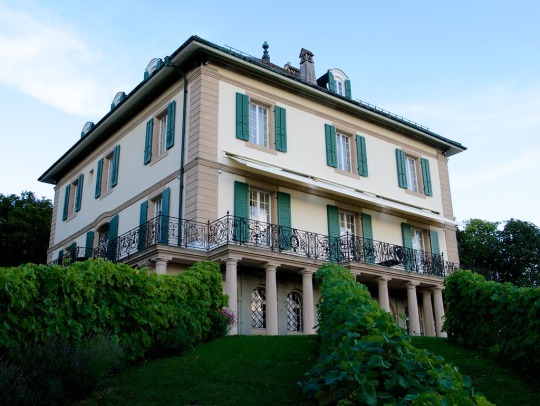


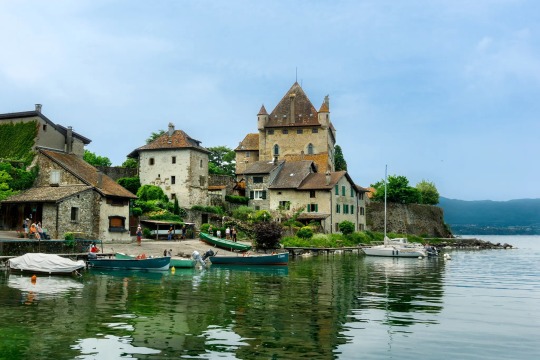

And thus concludes their tour around the lake.
UPDATE: I took my dates from Shelley, but his dates must have been confused and Byron's must be more accurate. Because I'd been confused by Byron's dates in the past, since he often wrote past midnight (thus often referring his prior day as "today"), I had assumed Shelley was more trustworthy. According to Shelley and His Circle vol. 4 pp. 700-701, they left on June 22nd which was a Saturday, and so I believe each day of their trip would be one earlier than I and Shelley stated in these posts.
Taken from Shelley and His Circle:
"TIMETABLE OF THE LAKE GENEVA TOUR
June 22, Saturday: Sailed from Montalègre, slept at Nernier.
June 23, Sunday: Sailed from Nernier, slept at Evian.
June 24, Monday: Sailed from Evian, encountered storm off Meillerie, slept at St. Gingolph.
June 25, Tuesday: Sailed from St. Gingolph, saw the mouths of the Rhone, visited Chillon Castle, landed at Clarens, visited bosquet de Julie, slept at Mme. Pauly's house (Place Gambetta) at Clarens.
June 26, Wednesday: Visited Le Châtelard, and the bosquet de Julie, sailed from Clarens, visited Vevey, slept at the Hotel de l'Ancre at Ouchy.
June 27, Thursday: Visited Gibbon's house at Lausanne, slept at Ouchy.
June 28, Friday: Remained at Ouchy.
June 29, Saturday: Sailed from Ouchy, slept at [?Rolle].
June 30, Sunday: Sailed from [?Rolle], arrived at Montalègre."
#and thus concludes pride month lmfao#if i fucked up the dates oh well#this is queued#2nd photo is#villa diodati#3rd is its balcony#which connected to byrons room i believe. no one is allowed to see the interior#shelley and byron’s sailing trip#literature#english literature#aesthetic#poetry#lord byron#romanticism#history#writing#percy shelley#geneva squad#romantics#romantic poets#photos#geneva#switzerland#summer of 1816#travel
23 notes
·
View notes
Note
Questions from a new Romantic era fanatic: Why does everyone hate polidori and who the hell is keats?
Hello, dear anon, and welcome to the World of Romanticism! There is no turning back now. This post will be super long, so if you wanted short answers, I beg you to forgive me for that, but I wanted to write something consistent and detailed, with many links for further reading in case you (or anyone else) are interested. Just click on “keep reading” (if you’re on the web. I’m not sure if there is this option on the mobile app).
Well, people hate John Polidori because he was an asshole in Geneva. To give you a few examples of his ridiculous behaviours: during a sailing trip, he hit Byron’s knee with an oar — Byron turned his face away in pain. Polidori, instead of apologising, remarked that he was glad to see that Byron was capable of demonstrating emotions. Byron got so pissed he said that if Mary wasn’t on board, he would have thrown Polidori overboard. The situation, according to Thomas Moore, went like this: “Be so kind, Polidori, another time, to take more care, for you hurt me very much.” — “I am glad of it,” answered the other; “I am glad to see you can suffer pain.” In a calm suppressed tone, Lord Byron replied, “Let me advise you, Polidori, when you, another time, hurt any one, not to express your satisfaction. People don’t like to be told that those who give them pain are glad of it; and they cannot always command their anger. It was with some difficulty that I refrained from throwing you into the water; and, but for Mrs. Shelley’s presence, I should probably have done some such rash thing.“He also purposefully picked on Shelley. On Moore’s words, “Polidori had become jealous of the growing intimacy of his noble patron with Shelley”, and even wanted to duel him after he lost a sailing match. However, Shelley was a known pacifist. Byron, on the other hand, offered himself to duel Polidori, claiming that “though Shelley has some scruples about duelling, I have none and shall be at all times ready to take his place.” Anyway, here’s what the physician wrote about Shelley when they first met: “bashful, shy, consumptive; twenty-six; separated from his wife; keeps the two daughters of Godwin, who practise his theories;”There was also that one time when Polidori asked Byron “what is there you can do that I cannot?”. Byron’s answer was priceless: “I can swim across that river—I can snuff out that candle with a pistol-shot at the distance of twenty paces—and I have written a poem of which 14,000 copies were sold in one day.”
Judging by what I’ve read so far, I’d say the guy was such a pain in the ass, that Byron didn’t even trust him. On a letter to Hobhouse (June 23rd, 1816), he wrote: “that child and childish Dr. Pollydolly contrived to find it [a bottle of potash] broken, or to break it (…)”
Apparently he was a decent person only when he was around Mary, probably because he had a crush on her.
Anyway, Byron was no saint — I adore him (more than I should, probably), but I do know he was a complex person. However, Polidori was the worst, and Byron didn’t deserve that.
Polidori’s journal from 1816 is available online for free. If you wish to read it, you can find it here.Another useful link: Life of Lord Byron, Vol. 3 by Thomas Moore. Also, fun fact: his sister, Frances Polidori, married Gabriele Rossetti. Therefore, John Polidori was Dante Gabriel Rossetti’s and Christina Rossetti’s uncle (although he died before they were born).
And now to who the hell is John Keats Well, here we go…Born in 1795, John Keats was a working-class man — someone whose life was quite frustrating, and surrounded by death (he died at 25, but still outlived his parents, his grandma and his brother). He wanted to be a poet, and to be among the great English poets when he died. Therefore, he began writing around 1814 (if I am not mistaken), and his poems were filled with beautiful lines about nature, beauty, imagination and words about his muse, a young woman named Fanny Brawne.Most of his contemporaries, however, didn’t like his work — it is said that his poems sold barely 200 copies back in the day. Byron, for example, despised Keats as a poet — he used to criticize his poems, and once he even said Keats’ works were a sort of “mental masturbation”. He mentions Keats in Don Juan (Canto XI, stanza LX. He kinda mocks the myth surrounding his death*), as well as in his letters.Shelley, on the other hand, loved Keats, and wrote a massive elegy on his death, Adonaïs, which probably helped keeping Keats’ legacy alive. When Shelley drowned, his body was identified because he had a book of poems by Keats in his pocket. Ironically, Keats didn’t like Shelley that much.Unfortunately, Keats fate was not a fair one: he contracted tuberculosis, probably from his brother, who died of consumption in 1818. The symptoms got worse around 1820, so it was decided that he should retire to a warmer climate in order to survive. In November of the same year, he arrived in Italy. However, because Keats was medically trained, and had already seen people dying of tuberculosis, so he knew he was going to die soon. He knew exactly what was going on, and that moving to Rome wouldn’t work. He knew was doomed.The poor man died in Italy, of tuberculosis, at the age of 25, in 1821, believing he was a failure. He was the youngest of the English Romantics, and also the first one to die.Even though his life was quite bitter, he always did his best to see beauty in every thing that surrounded him — quoting his Endymion “a thing of beauty is a joy forever”; and quoting Keats himself (from a letter): “"If I should die,” said I to myself, “I have left no immortal work behind me - nothing to make my friends proud of my memory - but I have loved the principle of beauty in all things, and if I had had time I would have made myself remembered.“”.From the state his lungs were after his death (described by his friend Severn on a letter to Fanny: “the lungs were completely gone. The Doctors could not conceive by what means he had lived these two months.”), one can only imagine how much he agonized and suffered during his last days.He was buried at the protestant cemetery in Rome (same place as Shelley). On his tombstone, one can read “This grave contains all that was Mortal of a Young English Poet Who on his Death Bed, in the Bitterness of his Heart at the Malicious Power of his Enemies Desired these Words to be engraven on his Tomb Stone: Here lies One Whose Name was writ in Water. ”After his death, Fanny Brawne suffered a lot for about 8 years of her life.John Keats became quite successful a few years later, during the Victorian era, and his poems deeply influenced the pre-raphaelites, and even Tennyson. Nowadays, he is considered to be one of the greatest English poets, as he so ardently desired to be during his lifetime.If you wish to read his poems, I recommend Ode to a Nightingale, On Death, Ode on a Grecian Urn, When I Have Fears, La Belle Dame Sans Merci, Bright Star, Isabella or The Pot of Basil, and This Living Hand. You can read more about John Keats’ life here and here. You can read Keats’ letters here
*The Myth surrounding Keats’ death was that he died because of the stress generated by the harsh comments his poems received. Obviously, that was not the case…
And that’s it.
Thank you very much for asking! I hope you enjoyed my answers! If you, or anyone else has any other question about the romantics, you can ask me here.
#this was the longest ask i've ever answered#lord byron#percy shelley#john keats#john polidori#romanticism#a few typos here and there#I'm sorry? please ignore them
176 notes
·
View notes
Text

MARY SHELLEY & PERCY SHELLEY
Years active: 1812--1822
MARY...
Mary Shelley, author of Frankenstein, was the daughter of the radical philosopher William Godwin, who described her as ‘singularly bold, somewhat imperious, and active of mind’. Her mother, who died days after her birth, was the famous defender of women’s rights, Mary Wollstonecraft. Mary grew up with five semi-related siblings in Godwin’s unconventional but intellectually electric household.
Mary’s childhood had elements of Cinderella, complete with a malevolent stepmother. Her father got remarried after the untimely death of her mother, to Mary Jane Clairmont, a widow with two young children. The new Mrs. Godwin favored her children over Mary and was jealous of William’s attention to her. She made life difficult for Mary and promoted her children’s education at the expense of Mary’s. Despite Mrs. Godwin’s efforts, Mary received an excellent education. She had access to her father’s library, listened to his discussions with other leading intellectuals, and immersed herself in her late mother’s writings. Due to clashes with her stepmother, Mary was sent to live with the Baxter family in Scotland. Here she finally found a loving family, and began to focus on her writing.
PERCY...
Percy Shelley enjoyed a life of privilege, and was sent to Eton College when he was twelve. After six years at Eton, where he became known for his anti-authoritarian views and began writing poetry and prose, he entered Oxford University in 1810. At Oxford he and a friend, Thomas Jefferson Hogg, influenced each other’s growing rejection of societal rules. Their collaboration on a pamphlet titled The Necessity of Atheism resulted in their expulsion from Oxford. Percy’s father, angered by his expulsion and refusal to renounce the pamphlet’s atheist ideas, cut him off financially until he came of age two years later. While living in poverty, Percy eloped with sixteen-year-old Harriet Westbrook.
LOVE NEVER DIES...
On a visit home in 1812, fifteen-year-old Mary met Percy Shelley, an admirer of her father. Percy visited the Godwin home often, and became friendly with Mary, whom he recognized as an intellectual soulmate. Percy resented that his wife Harriet, preoccupied with one child and pregnant with another, no longer made him the center of attention.
In 1814, Mary and Percy began meeting each other secretly, as William Godwin forbade the relationship [after Percy fell through in bailing him out of debt]. They had a series of rendezvous at Mary Wollstonecraft's grave in St Pancras Churchyard, and they fell in love—she was 17, he nearly 22. On 26 June, Shelley and Godwin declared their love for one another as Shelley announced he could not hide his "ardent passion", leading her in a "sublime and rapturous moment" to say she felt the same way. On either that day or the next, Mary lost her virginity to Percy, famously consummated near the grave of her mother.
Soon after, the couple left for France with Mary’s stepsister, Claire Clairmont. The trio traveled throughout Europe reading the works of Mary’s mother, keeping a journal of their travels, and developing their own writing.
By the fall of 1814, money had run out and they were forced to return home. To further complicate matters, Mary discovered that she was pregnant. Mary tried her best to maintain a normal lifestyle despite a sickly pregnancy but it is rumored that during this time Percy began an affair with Claire. Little evidence supports the claim, however; several sections of Mary’s journals are missing from the period, Claire’s journal has disappeared, and Thomas Hogg--Percy’s friend and biographer--does not include a history past 1815. In any case, Mary was frequently left alone while Shelley visited his wife or engaged in outings with Claire.
February of 1815 proved devastating for Mary, as her daughter was born two months premature and died two weeks later. Percy’s apathy towards the loss of their child compelled Mary to search elsewhere for comfort and she turned to Thomas Hogg for companionship. It is often thought that Percy encouraged a relationship between Mary and Hogg, especially after his own alleged affair with Claire. Mary had no interest in a romantic relationship beyond Percy, however.
In May 1816, Mary, Percy and their son William, born the same year, traveled to Geneva where they spent the infamous ���summer without sun‘ in the company of Lord Byron, Claire Clairmont and John William Polidori, Byron’s physician. The tranquil, bleak and desolate atmosphere was inspiration for a group of young poets and writers. What started as a challenge to write a ghost story, turned into a hauntingly magnificent novel, Frankenstein. Mary was just nineteen years old when she wrote the novel, but in the companion of such geniuses as were Byron and Shelley, she had not dared to present them with a less haunting story. Published anonymously in 1818 with a preface by Percy, it became one of the most popular works of the Romantic period.
Percy and Mary returned to England in 1816 to face back-to-back tragedies. Mary’s half-sister committed suicide and a few weeks later, Percy’s wife, Harriet, killed herself. Harriet’s death allowed Percy and Mary to wed. Percy’s efforts to gain custody of his two children with Harriet were blocked by her family’s claims that his poetry [especially free love and atheism promoted in the political epic Queen Mab] showed him to be an unfit parent. In March of 1818, the Shelleys settled in Italy, where Percy became part of an expatriate artistic community centered on Lord Byron. There, Percy wrote some of his best work: Prometheus Unbound, “Ode to the West Wind,” “The Cloud, “To a Skylark,” and “Ode to Liberty.” Sadly, their two children, William and Clara, died a year apart, in 1818 and 1819. Mary gave birth to a son, Percy Florence, in November 1819.
By 1822, the Shelleys had settled on the Bay of San Terenzo in Italy. They were joined by Edward Williams and his wife, Jane. Mary, who had inherited her mother’s melancholic streak, became depressed and isolated after the loss of her children. Percy, disappointed in his marriage, began a flirtation with Jane and wrote several poems to her. Still, Shelley expressed Mary’s isolation from him:
“My dearest Mary, wherefore hast thou gone,
And left me in this dreary world alone?
Thy form is here indeed--a lovely one
But thou art fled, gone down a dreary road
That leads to Sorrow’s most obscure abode.
For thine own sake I cannot follow thee
Do thou return for mine.”
On 8 July, Percy and Edward Williams set out on a sailing trip with their eighteen-year-old boatboy, Charles Vivian. They never reached their destination. A letter arrived to Mary addressed for Percy, saying, "pray write to tell us how you got home, for they say you had bad weather after you sailed monday & we are anxious". Mary and Jane Williams rushed desperately to Pisa in the fading hope that their husbands were still alive. Ten days after the storm, three bodies washed up on the coast near Viareggio. Byron and friends cremated Percy Shelley’s corpse on the beach.
Mary devoted herself to caring for Percy Florence, the only one of her five children to reach adulthood. She was also dedicated to maintaining her husband’s literary legacy. She collected and edited Percy’s poetry and wrote his biography. She continued to write the rest of her life, and was able to provide Percy Florence with an excellent education at Harrow and Cambridge University. Mary died of a brain tumor in February of 1851.
MARY SHELLEY is CLOSED. PERCY SHELLEY is OPEN !
13 notes
·
View notes
Text
The Sad and Senseless Death of Percy Shelley
It was on this day in 1822 that poet Percy Bysshe Shelley drowned. He had spent the past four years traveling around Italy with his wife, and it was during this period that he wrote almost all of his most famous poems, including Prometheus Unbound (1820). He was living in La Spezia, on the west coast of Italy, at the time of his death.
Shelley had just bought a schooner two months earlier. The boat was twenty-four feet long, with twin masts, and it was called Don Juan, after the poem by his friend Lord Byron. He often spent mornings sitting on the boat as it lay anchored in the bay, reading and writing as he bobbed up and down with the waves. He worked on his last poem, "The Triumph of Life," which begins:
As in that trance of wonderous thought I lay This was the tenour of my waking dream. Methought I sate beside a public way
Thick strewn with summer dust, & a great stream Of people there was hurrying to & fro Numerous as gnats upon the evening gleam,
All hastening onward, yet none seemed to know Whither he went, or whence he came, or why...

When the weather was nice, Shelley started taking his boat on short outings, and he was looking forward to making a few longer trips with his wife during the summer. He wrote in a letter to a friend, "[My boat] is swift and beautiful, and appears quite a vessel. . . . We drive along this delightful bay in the evening wind, under the summer moon, until earth appears another world."
On July 1, Shelley and his friend Edward Williams left from La Spezia to Pisa. They started their return trip on July 7, and on this day, July 8, 1822, Shelley set off from Livorno to La Spezia, a trip of about fifty-five miles. There was a storm approaching from the southwest, and most of the Italian boats came into the harbor, but Shelley wanted to make it back that evening.
Shelley's friend Captain Roberts watched them sail away from a lighthouse, and as the storm got worse he began to grow worried. He took a large boat out to sea and offered to take Shelley and Williams on board, but Shelley refused the offer. A sailor said through a speaking trumpet, "If you will not come on board for God's sake reef your sails or you are lost." According to the sailor, Williams tried to lower the sails but Shelley grabbed him by the arm and wouldn't let him. The boat sank in the Gulf of Spezia later that evening. When Shelley's body washed up on shore ten days later, a copy of Keats's poems was found in his back pocket.
SOURCE http://writersalmanac.org/episodes/20170708/
1 note
·
View note
Quote
The day after they met, Shelley and Byron dined together and discovered they shared similar obsessions: liberty, poetry, Napoleon, the Greek poets, the hypocrisy of London, and, of course, themselves—their struggles with melancholy, the criticism they had endured, and their commitment to art. Together, they took a day trip to Plainpalais to pay homage to Rousseau, whose bust sat squarely in the middle of the park. Claire [Clairmont], frustrated that she did not have more time alone with Byron, volunteered to copy his most recent poems. But all this did was turn her into a secretary; she toiled, alone with his manuscripts, struggling with his handwriting, while Byron sailed, rowed, swam, and visited with the others. His fascination with the rise and fall of heroes, or, to be more precise, with his own rise and fall, may well have fired his poetic compositions with passion and originality, but it made him much too self-absorbed to be a good candidate for a love affair.
Charlotte Gordon, Romantic Outlaws
0 notes
Text
WEEK SEVEN (Dec 15 - Dec 21)
NEW SOUTH WALES COAST, AUS // SYDNEY, NSW, AUS
We were lucky that our first campsite of the road trip happened to be located only meters from the beach at Broken Head Nature Reserve, so we took advantage of this fact and went for a quick dip first thing in the morning. Since we rolled into Byron Bay so late the previous day, we figured we would stay an additional night so we could spend the day exploring around the town and hitting the beach. Summertime is peak season for the bohemian beach town, and the streets were packed with vacationers, backpackers, and fellow van dwellers. After packing up camp, we drove to check out the iconic Byron Bay lighthouse and toured the historic museum inside. Coming down the hill from the lighthouse, we noticed a carpark for Captain Cook's Beach and decided to stop for a couple hours to lay out on the sand and swim in both a nearby lagoon and in the bay. Once we had our fill of beach time, we headed to the downtown area to check out a couple shops, then made our way to Woolworth's for that evening's dinner supplies. We pulled up to Beaches at Byron, immediately set up camp, then took a sunset stroll to Tallow's Beach as the sun sank lower in the sky behind us. Walking down the deserted beach, the pristine white-sand seemed to stretch on for miles, while feelings of peace and tranquility surrounded us as we reveled in its vast emptiness. Upon our return to the campsite, we drank red wine and ate dinner in our van's "living room", listening to Nancy Sinatra. Post dinner, we spent the remainder of the evening thumbing through our camper's guide to plan our next moves down the coast.
Before leaving the Byron area the next morning, we took a detour up a gravel road to the dirt carpark on the headlands above King's Beach. The fifteen minute descent down a narrow footpath led us through dense tropical rainforest in Broken Head Nature Reserve, until the foliage opened up to reveal a secluded shoreline. The hidden beach was sheltered by vivid green mountains on three sides, and jagged rocks protruding from the water framed a small protected bay. We waded down to the opposite end of the beach as waves crashed against the large rocks, but unfortunately, we needed to leave due to time constraints if we wished to make it to Coff's Harbour before sundown. More farmland, palms, and gumtree forests whizzed past our windows as we sped along on our three hour journey south. We had booked a spot at North Coast Holiday Parks Coff's Harbour, and soon discovered that we were the only campers in a giant meadow next to a small lake! Dinner consisted of feta/avo burgers with zucchini fries, and we ended up having a few beers inside the van whilst catching up on some writing.
On our way out of Coff's Harbour the next morning, we took a short walk along the marina's jetty, then made a pit stop at the Nambucca Heads beach. (Side note: the term "heads" is Aussie for "headlands".) We continued down the coastal highway, blasting the Grateful Dead, towards Hat Head National Park, where we had planned to stay the night. Smoky Cape campground is nestled amongst Australian rainforest in Hat Head, and is a remote site where campers are required to be fully self-sufficient. As we approached the camp entrance, we were in awe of the tropical foliage that enveloped us. All the sites at Smoky Cape are fist-come, first-served, so after claiming one for ourselves, we began setting up our canopy as dark clouds covered the sun. Small drops quickly turned into a downpour, so we retreated back inside the van before finishing our set-up. After the storm cleared around thirty minutes later, we finished setting up camp and did some exploring on the beach.
We awoke early the next morning to discover a family of kangaroos had invaded our site! Right outside our window, a mama kangaroo and her joey, were foraging on the ground for food. The next hour was spent watching them intently from inside the van, as we had never seen them so close in the wild before. As we left the national park, we made the quick drive up the headland to Smoky Cape lighthouse, snapped some photos, and saw another pack of wild kangaroos on the bluffs. Our destination that evening was Booti Booti National Park, near Forester. Since this was one of the longer legs of our journey, we broke up the drive with stops in South West Rocks, Crescent Head, and Port Macquerie. We finally made it to The Ruins campground in Booti Booti, set up in a giant open field, explored the immediate area, and made dinner inside the van. The campground is situated in the center of a large meadow near the beach, but is surrounded by small mountains covered in various palms and nine different species of gumtree. We called it an early night and just watched a movie on the ipad, since we had planned to hike a 6km return trail to Shelley Beach the next morning.
Our hike started at Seven Mile Beach, which is where the Booti Hill Walking Track begins, just outside of the campground. We slowly made our way through the overgrown forest, up and over the ridge, and down the other side to Elizabeth Beach. At one point on our walk, we were startled by a giant 3ft goanna lizard as it crossed the trail and back into the underbrush! Luckily we had been looking down on the trail at that moment, since the constant panoramic ocean views had our eyes preoccupied for most of the hike. Once we made it to Elizabeth Beach, we took another shorter trail to Shelley, which we realized upon our arrival was clothing optional. After a swim and a picnic, we hiked back via the same trail, and popped open some victory beers upon our return to the van. We left for our last stop, Newcastle, in the early afternoon, and were treated to a scenic drive through the New South Wales great lakes. Some time later, we reached Newcastle and spent the night on a peninsula in Lake Macquarie-- the largest coastal salt water lake in the country.
The remaining two hour drive down M1 into Sydney took us over several large rivers, and through the mountains of Ku-Ring-Gai Chase National Park. We arrived at our apartment rental in Milson's Point at almost the exact same time as Jed's mom, dad, brother, and sister-in-law, who had all flown in from California. After lunch at a nearby cafe, we walked across the Sydney Harbour Bridge to the historic Sydney Rocks district-- which is the site of the very first European settlement in Australia. From there, we made our way to Circular Quay and the world famous Sydney Opera House. The two-toned white and cream tiles of the opera house roof, along with the building's architectural design, were chosen specifically to invoke the imagery of a ship's sails slowly gliding into Sydney Harbour. The six of us ate an early dinner down at the Rocks, proceeded to walk back over the harbor bridge, and make it to Milson's Point just as it began raining. We finished off the night sipping wine and watching the sun go down from our balcony.
In order to gain some better insight into Sydney's history, we partook in a free walking tour that started near town hall, and then ended three hours later near the Rocks. Highlights of the tour included St. Andrew's Cathedral, Queen Victoria Building, Sydney Tower Eye, Hyde Park, the old mint, Parliament House, Cadman's Cottage, and the Rocks. We had all been itching to get out on the water, so after the tour we rode the ferry to Manly Beach across the bay. To cool down a bit, we bought some gelato, and dipped our tired feet into the sea. After returning to Milson's Point and showering, we ditched the old folks (just kidding), and Jed, Britt, Ricky, and Allie took the train back to the CBD to try a Thai restaurant, Home Thai, highly recommended by our tour guide. Before heading back to the apartment, the four of us ducked into a nearby bar for a nightcap and a game of Australian style pool. We found it slightly more challenging than the American style we were all used to, since the pockets are smaller and the pool balls are three-quarters the size of those found in the U.S. Worn out from so much walking, we didn't stay too long, and we all passed out as soon as our heads hit the pillows.
0 notes
Text
On June 23rd, 1816, Percy Shelley and Lord Byron got a boat together and set out on a sailing trip around Lake Geneva while sightseeing and reading Rousseau’s famous novel Julie, which takes place there. Percy chronicles this in his and Mary’s joint publication (her first publication), History of a Six Weeks’ Tour. They don’t name-drop Byron for privacy, but call him their “companion.”
Day 1, June 23rd, 1816 —
Percy Shelley, History of a Six Weeks' Tour:
“It is nearly a fortnight since I have returned from Vevai. This journey has been on every account delightful, but most especially, because then I first knew the divine beauty of Rousseau's imagination, as it exhibits itself in Julie. It is inconceivable what an enchantment the scene itself lends to those delineations, from which its own most touching charm arises. But I will give you an abstract of our voyage, which lasted eight days, and if you have a map of Switzerland, you can follow me.
We left Montalegre at half past two on the 23d of June. The lake was calm, and after three hours of rowing we arrived at Hermance, a beautiful little village, containing a ruined tower, built, the villagers say, by Julius Cæsar. There were three other towers similar to it, which the Genevese destroyed for their own fortifications in 1560. We got into the tower by a kind of window. The walls are immensely solid, and the stone of which it is built so hard, that it yet retained the mark of chisels. The boatmen said, that this tower was once three times higher than it is now. There are two staircases in the thickness of the walls, one of which is entirely demolished, and the other half ruined, and only accessible by a ladder. The town itself, now an inconsiderable village inhabited by a few fishermen, was built by a Queen of Burgundy, and reduced to its present state by the inhabitants of Berne, who burnt and ravaged every thing they could find.
Leaving Hermance, we arrived at sunset at the village of Nerni. After looking at our lodgings, which were gloomy and dirty, we walked out by the side of the lake. It was beautiful to see the vast expanse of these purple and misty waters broken by the craggy islets near to its slant and ‘beached margin.’ There were many fish sporting in the lake, and multitudes were collected close to the rocks to catch the flies which inhabited them.
On returning to the village, we sat on a wall beside the lake, looking at some children who were playing at a game like ninepins. The children here appeared in an extraordinary way deformed and diseased. Most of them were crooked, and with enlarged throats; but one little boy had such exquisite grace in his mien and motions, as I never before saw equalled in a child. His countenance was beautiful for the expression with which it overflowed. There was a mixture of pride and gentleness in his eyes and lips, the indications of sensibility, which his education will probably pervert to misery or seduce to crime; but there was more of gentleness than of pride, and it seemed that the pride was tamed from its original wildness by the habitual exercise of milder feelings. My companion gave him a piece of money, which he took without speaking, with a sweet smile of easy thankfulness, and then with an unembarrassed air turned to his play. All this might scarcely be; but the imagination surely could not forbear to breathe into the most inanimate forms some likeness of its own visions, on such a serene and glowing evening, in this remote and romantic village, beside the calm lake that bore us hither.
On returning to our inn, we found that the servant had arranged our rooms, and deprived them of the greater portion of their former disconsolate appearance. They reminded my companion of Greece: it was five years, he said, since he had slept in such beds. The influence of the recollections excited by this circumstance on our conversation gradually faded, and I retired to rest with no unpleasant sensations, thinking of our journey tomorrow, and of the pleasure of recounting the little adventures of it when we return.”

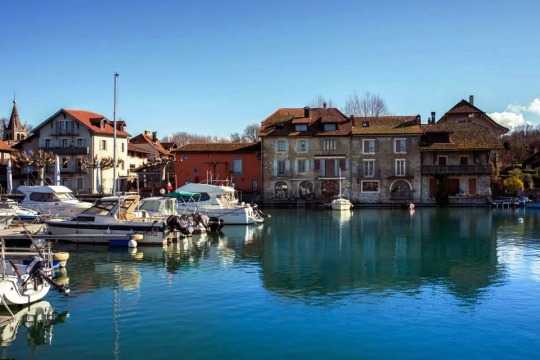

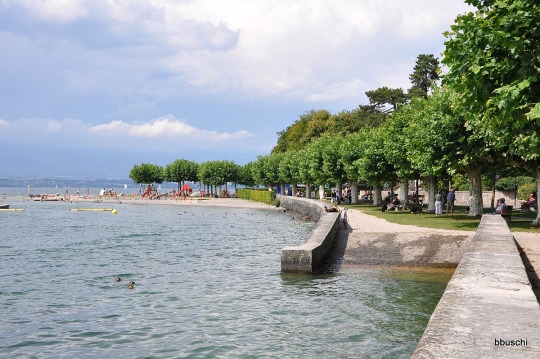
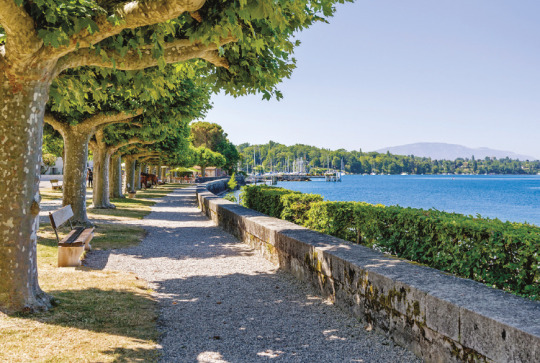
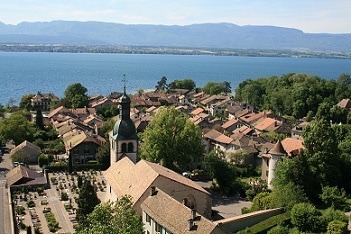
UPDATE: I took my dates from Shelley, but his dates must have been confused and Byron's must be more accurate. Because I'd been confused by Byron's dates in the past, since he often wrote past midnight (thus often referring his prior day as "today"), I had assumed Shelley was more trustworthy. According to Shelley and His Circle vol. 4 pp. 700-701, they left on June 22nd which was a Saturday, and so I believe each day of their trip would be one earlier than I and Shelley stated in these posts.
Taken from Shelley and His Circle:
"TIMETABLE OF THE LAKE GENEVA TOUR
June 22, Saturday: Sailed from Montalègre, slept at Nernier.
June 23, Sunday: Sailed from Nernier, slept at Evian.
June 24, Monday: Sailed from Evian, encountered storm off Meillerie, slept at St. Gingolph.
June 25, Tuesday: Sailed from St. Gingolph, saw the mouths of the Rhone, visited Chillon Castle, landed at Clarens, visited bosquet de Julie, slept at Mme. Pauly's house (Place Gambetta) at Clarens.
June 26, Wednesday: Visited Le Châtelard, and the bosquet de Julie, sailed from Clarens, visited Vevey, slept at the Hotel de l'Ancre at Ouchy.
June 27, Thursday: Visited Gibbon's house at Lausanne, slept at Ouchy.
June 28, Friday: Remained at Ouchy.
June 29, Saturday: Sailed from Ouchy, slept at [?Rolle].
June 30, Sunday: Sailed from [?Rolle], arrived at Montalègre."
#i wanted to start this yesterday#regret#shelley and byron’s sailing trip#literature#english literature#aesthetic#poetry#lord byron#percy shelley#romanticism#romantics#english romanticism#romantic era#romantic poets#sailing#travel#geneva#the geneva squad#geneva squad#lake#beauty#writing#history#dark academia#rousseau#books
21 notes
·
View notes
Text
Byron and Shelley chronicle their 1816 sailing trip in Lake Geneva — Day 2, June 24th —
Percy Shelley, History of a Six Weeks' Tour:
“The next morning we passed Yvoire, a scattered village with an ancient castle, whose houses are interspersed with trees, and which stands at a little distance from Nerni, on the promontory which bounds a deep bay, some miles in extent. So soon as we arrived at this promontory, the lake began to assume an aspect of wilder magnificence. The mountains of Savoy, whose summits were bright with snow, descended in broken slopes to the lake: on high, the rocks were dark with pine forests, which become deeper and more immense, until the ice and snow mingle with the points of naked rock that pierce the blue air; but below, groves of walnut, chesnut, and oak, with openings of lawny fields, attested the milder climate.
As soon as we had passed the opposite promontory, we saw the river Drance, which descends from between a chasm in the mountains, and makes a plain near the lake, intersected by its divided streams. Thousands of besolets, beautiful water-birds, like sea-gulls, but smaller, with purple on their backs, take their station on the shallows, where its waters mingle with the lake. As we approached Evian, the mountains descended more precipitously to the lake, and masses of intermingled wood and rock overhung its shining spire.
We arrived at this town about seven o'clock, after a day which involved more rapid changes of atmosphere than I ever recollect to have observed before. The morning was cold and wet; then an easterly wind, and the clouds hard and high; then thunder showers, and wind shifting to every quarter; then a warm blast from the south, and summer clouds hanging over the peaks, with bright blue sky between. About half an hour after we had arrived at Evian, a few flashes of lightning came from a dark cloud, directly over head, and continued after the cloud had dispersed. ‘Diespiter, per pura tonantes egit equos:’ a phenomenon which certainly had no influence on me, corresponding with that which it produced on Horace.
The appearance of the inhabitants of Evian is more wretched, diseased and poor, than I ever recollect to have seen. The contrast indeed between the subjects of the King of Sardinia and the citizens of the independent republics of Switzerland, affords a powerful illustration of the blighting mischiefs of despotism, within the space of a few miles. They have mineral waters here, eaux savonneuses, they call them. In the evening we had some difficulty about our passports, but so soon as the syndic heard my companion's rank and name, he apologized for the circumstance. The inn was good. During our voyage, on the distant height of a hill, covered with pine-forests, we saw a ruined castle, which reminded me of those on the Rhine.”
Lord Byron in a letter to Hobhouse:
"Evian—June 23d. 1816
“At the present writing I am on my way on a water-tour round the Lake Leman — and am thus far proceeded in a pretty open boat which I bought & navigate — it is an English one & was brought lately from Bordeaux — I am on shore for the Night — and have just had a row with the Syndic of this town who wanted my passports which I left at Diodati not thinking they would be wanted except in grand route — but it seems this is Savoy and the dominion of his Cagliari Majesty whom we saw at his own Opera — in his own city — in 1809 — however by dint of references to Geneva — & other corroborations — together with being in a very ill humour — Truth has prevailed — wonderful to relate they actually take one's word for a fact - although it is credible and indubitable. — Tomorrow we go to Meillerai - & Clarens - & Vevey - with Rousseau in hand - to see his scenery - according to his delineation in his Heloise now before me. - The views have hitherto been very fine - but I should conceive less so than those of the remainder of the lake.”
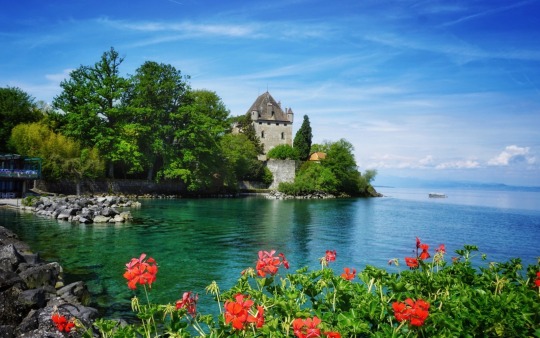
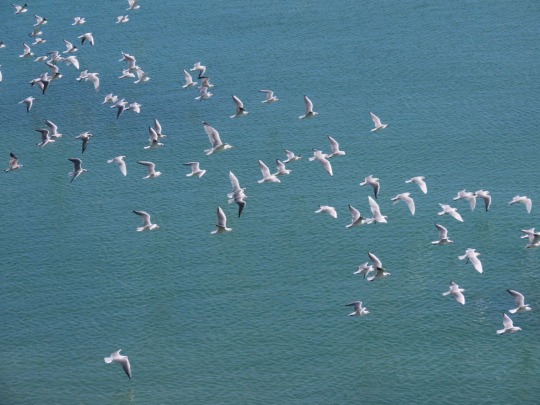
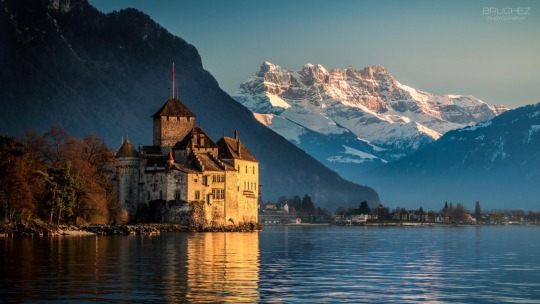




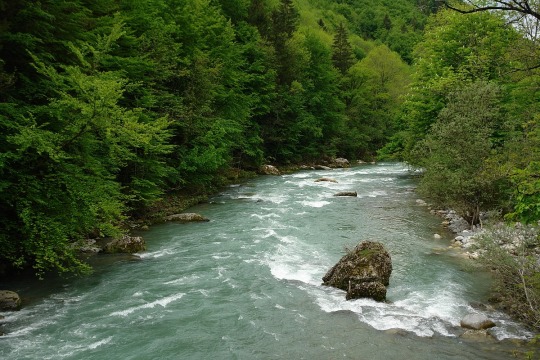
UPDATE: I took my dates from Shelley, but his dates must have been confused and Byron's must be more accurate. Because I'd been confused by Byron's dates in the past, since he often wrote past midnight (thus often referring his prior day as "today"), I had assumed Shelley was more trustworthy. According to Shelley and His Circle vol. 4 pp. 700-701, they left on June 22nd which was a Saturday, and so I believe each day of their trip would be one earlier than I and Shelley stated in these posts.
Taken from Shelley and His Circle:
"TIMETABLE OF THE LAKE GENEVA TOUR
June 22, Saturday: Sailed from Montalègre, slept at Nernier.
June 23, Sunday: Sailed from Nernier, slept at Evian.
June 24, Monday: Sailed from Evian, encountered storm off Meillerie, slept at St. Gingolph.
June 25, Tuesday: Sailed from St. Gingolph, saw the mouths of the Rhone, visited Chillon Castle, landed at Clarens, visited bosquet de Julie, slept at Mme. Pauly's house (Place Gambetta) at Clarens.
June 26, Wednesday: Visited Le Châtelard, and the bosquet de Julie, sailed from Clarens, visited Vevey, slept at the Hotel de l'Ancre at Ouchy.
June 27, Thursday: Visited Gibbon's house at Lausanne, slept at Ouchy.
June 28, Friday: Remained at Ouchy.
June 29, Saturday: Sailed from Ouchy, slept at [?Rolle].
June 30, Sunday: Sailed from [?Rolle], arrived at Montalègre."
#shelley and byron’s sailing trip#literature#english literature#aesthetic#poetry#lord byron#percy shelley#romanticism#history#writing#lake geneva#geneva squad#switzerland#traveling#sailing#romantics#romantic poets
19 notes
·
View notes
Text
Byron and Shelley chronicle their 1816 sailing trip in Lake Geneva — Days 6/7, June 28th/29th — preview: they get stuck in Ouchy due to the rain, go sightseeing in Lausanne, and visit Edward Gibbon’s former home.
Percy Shelley, History of a Six Weeks' Tour:
“The rain detained us two days at Ouchy. We however visited Lausanne, and saw Gibbon's house. We were shewn the decayed summer-house where he finished his History, and the old acacias on the terrace, from which he saw Mont Blanc, after having written the last sentence. There is something grand and even touching in the regret which he expresses at the completion of his task. It was conceived amid the ruins of the Capitol. The sudden departure of his cherished and accustomed toil must have left him, like the death of a dear friend, sad and solitary.
My companion gathered some acacia leaves to preserve in remembrance of him. I refrained from doing so, fearing to outrage the greater and more sacred name of Rousseau; the contemplation of whose imperishable creations had left no vacancy in my heart for mortal things. Gibbon had a cold and unimpassioned spirit. I never felt more inclination to rail at the prejudices which cling to such a thing, than now that Julie and Clarens, Lausanne and the Roman Empire, compelled me to a contrast between Rousseau and Gibbon.
When we returned, in the only interval of sunshine during the day, I walked on the pier which the lake was lashing with its waves. A rainbow spanned the lake, or rather rested one extremity of its arch upon the water, and the other at the foot of the mountains of Savoy. Some white houses, I know not if they were those of Mellerie, shone through the yellow fire.”
Byron in a letter to John Murray:
“Ouchy, near Lausanne, June 27th, 1816.
Dear Sir
I am thus far kept by stress of weather on my way back to Diodati near Geneva from a voyage in my boat round the lake - & I enclose you a sprig of Gibbon's Acacia & some rose leaves from his garden - which part of his house I have just seen - you will find honourable mention in his life made of this ‘Acacia’ when he walked out on the night of concluding his history. - The garden - & summerhouse where he composed are neglected - & the last utterly decayed - but they still show it as his ‘Cabinet’ & seem perfectly aware of his memory. - My route - through Flanders - & by the Rhine to Switzerland was all I expected & more. - -
I have traversed all Rousseau's ground - with the Heloise before me - & am struck to a degree with the force & accuracy of his descriptions - & the beauty of their reality: - Meillerie - Clarens - & Vevey - & the Chateau de Chillon are places of which I shall say little - because all I could say must fall short of the impressions they stamp.
Three days ago - we were most nearly wrecked in a Squall off Meillerie - & driven to shore — I ran no risk being so near the rocks and a good swimmer - but our party were wet - & incommoded a good deal: - the wind was strong enough to blow down some trees as we found at landing - however all is righted & right - & we are thus far on return.
Dr. Polidori is not here - - but at Diodati - left behind in hospital with a sprained ancle acquired in tumbling from a wall - he can't jump.* ——“
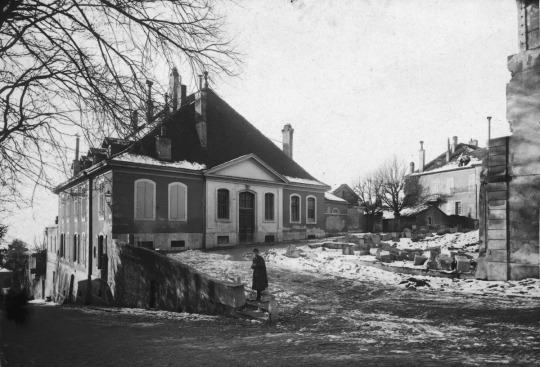
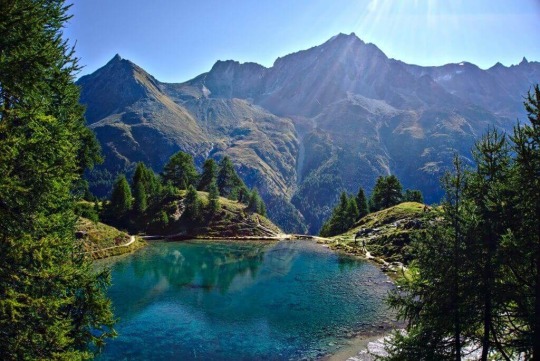
*This is a reference to the instance where Byron (probably jokingly) suggested that Polidori should jump off a balcony in the rain to impress Mary Shelley. When Polidori actually did it, Byron was shocked and helped him inside to prop him up with a pillow. Polidori was then furious with him. See: Mary Shelley’s contributions concerning the Villa Diodati in Thomas Moore’s Life of Byron
UPDATE: I took my dates from Shelley, but his dates must have been confused and Byron's must be more accurate. Because I'd been confused by Byron's dates in the past, since he often wrote past midnight (thus often referring his prior day as "today"), I had assumed Shelley was more trustworthy. According to Shelley and His Circle vol. 4 pp. 700-701, they left on June 22nd which was a Saturday, and so I believe each day of their trip would be one earlier than I and Shelley stated in these posts.
Taken from Shelley and His Circle:
"TIMETABLE OF THE LAKE GENEVA TOUR
June 22, Saturday: Sailed from Montalègre, slept at Nernier.
June 23, Sunday: Sailed from Nernier, slept at Evian.
June 24, Monday: Sailed from Evian, encountered storm off Meillerie, slept at St. Gingolph.
June 25, Tuesday: Sailed from St. Gingolph, saw the mouths of the Rhone, visited Chillon Castle, landed at Clarens, visited bosquet de Julie, slept at Mme. Pauly's house (Place Gambetta) at Clarens.
June 26, Wednesday: Visited Le Châtelard, and the bosquet de Julie, sailed from Clarens, visited Vevey, slept at the Hotel de l'Ancre at Ouchy.
June 27, Thursday: Visited Gibbon's house at Lausanne, slept at Ouchy.
June 28, Friday: Remained at Ouchy.
June 29, Saturday: Sailed from Ouchy, slept at [?Rolle].
June 30, Sunday: Sailed from [?Rolle], arrived at Montalègre."
#shelley and byron’s sailing trip#poetry#english literature#literature#lord byron#romanticism#history#writing#percy shelley#geneva#geneva squad#aesthetic#romantics#romantic poets#travel writing#switzerland#sailing#trip#trip diary#diaries#letters#books
13 notes
·
View notes
Text
Byron and Shelley Chronicle their 1816 sailing trip in Lake Geneva — Day 3, June 25th — overview: they leave Evian in poor weather and arrive safely in Mellerie to eat honey and sightsee. Shelley raves about the book he’s reading (Rousseau’s Julie) and complains about the monarchy. They leave Mellerie in stormy weather. The boat almost sinks. Byron offers to save Shelley, who refuses his help. The boat is miraculously saved; they arrive in St. Gingoux and the locals congratulate them.
Percy Shelley, History of a Six Weeks' Tour:
“We left Evian on the following morning, with a wind of such violence as to permit but one sail to be carried. The waves also were exceedingly high, and our boat so heavily laden, that there appeared to be some danger. We arrived however safe at Mellerie, after passing with great speed mighty forests which overhung the lake, and lawns of exquisite verdure, and mountains with bare and icy points, which rose immediately from the summit of the rocks, whose bases were echoing to the waves.
We here heard that the Empress Maria Louisa had slept at Mellerie, before the present inn was built, and when the accommodations were those of the most wretched village, in remembrance of St. Preux. How beautiful it is to find that the common sentiments of human nature can attach themselves to those who are the most removed from its duties and its enjoyments, when Genius pleads for their admission at the gate of Power. To own them was becoming in the Empress, and confirms the affectionate praise contained in the regret of a great and enlightened nation. A Bourbon dared not even to have remembered Rousseau. She owed this power to that democracy which her husband's dynasty outraged, and of which it was however in some sort the representative among the nations of the earth. This little incident shews at once how unfit and how impossible it is for the ancient system of opinions, or for any power built upon a conspiracy to revive them, permanently to subsist among mankind. We dined there, and had some honey, the best I have ever tasted, the very essence of the mountain flowers, and as fragrant. Probably the village derives its name from this production. Mellerie is the well known scene of St. Preux's visionary exile; but Mellerie is indeed inchanted ground, were Rousseau no magician. Groves of pine, chesnut, and walnut overshadow it; magnificent and unbounded forests to which England affords no parallel. In the midst of these woods are dells of lawny expanse, inconceivably verdant, adorned with a thousand of the rarest flowers and odorous with thyme.
The lake appeared somewhat calmer as we left Mellerie, sailing close to the banks, whose magnificence augmented with the turn of every promontory. But we congratulated ourselves too soon: the wind gradually increased in violence, until it blew tremendously; and as it came from the remotest extremity of the lake, produced waves of a frightful height, and covered the whole surface with a chaos of foam. One of our boatmen, who was a dreadfully stupid fellow, persisted in holding the sail at a time when the boat was on the point of being driven under water by the hurricane. On discovering his error, he let it entirely go, and the boat for a moment refused to obey the helm; in addition, the rudder was so broken as to render the management of it very difficult; one wave fell in, and then another. My companion, an excellent swimmer, took off his coat, I did the same, and we sat with our arms crossed, every instant expecting to be swamped. The sail was however again held, the boat obeyed the helm, and still in imminent peril from the immensity of the waves, we arrived in a few minutes at a sheltered port, in the village of St. Gingoux.
I felt in this near prospect of death a mixture of sensations, among which terror entered, though but subordinately. My feelings would have been less painful had I been alone; but I know that my companion would have attempted to save me, and I was overcome with humiliation, when I thought that his life might have been risked to preserve mine. When we arrived at St. Gingoux, the inhabitants, who stood on the shore, unaccustomed to see a vessel as frail as ours, and fearing to venture at all on such a sea, exchanged looks of wonder and congratulation with our boatmen, who, as well as ourselves, were well pleased to set foot on shore.
St. Gingoux is even more beautiful than Mellerie; the mountains are higher, and their loftiest points of elevation descend more abruptly to the lake. On high, the aerial summits still cherish great depths of snow in their ravines, and in the paths of their unseen torrents. One of the highest of these is called Roche de St. Julien, beneath whose pinnacles the forests become deeper and more extensive; the chesnut gives a peculiarity to the scene, which is most beautiful, and will make a picture in my memory, distinct from all other mountain scenes which I have ever before visited.
As we arrived here early, we took a voiture to visit the mouth of the Rhone. We went between the mountains and the lake, under groves of mighty chesnut trees, beside perpetual streams, which are nourished by the snows above, and form stalactites on the rocks, over which they fall. We saw an immense chesnut tree, which had been overthrown by the hurricane of the morning. The place where the Rhone joins the lake was marked by a line of tremendous breakers; the river is as rapid as when it leaves the lake, but is muddy and dark. We went about a league farther on the road to La Valais, and stopped at a castle called La Tour de Bouverie, which seems to be the frontier of Switzerland and Savoy, as we were asked for our passports, on the supposition of our proceeding to Italy.
On one side of the road was the immense Roche de St. Julien, which overhung it; through the gateway of the castle we saw the snowy mountains of La Valais, clothed in clouds, and on the other side was the willowy plain of the Rhone, in a character of striking contrast with the rest of the scene, bounded by the dark mountains that overhang Clarens, Vevai, and the lake that rolls between. In the midst of the plain rises a little isolated hill, on which the white spire of a church peeps from among the tufted chesnut woods. We returned to St. Gingoux before sunset, and I passed the evening in reading Julie.”
Byron writing to John Murray (dated Ouchy, near Lausanne, June 27th, 1816):
“Three days ago - we were most nearly wrecked in a Squall off Meillerie - & driven to shore — I ran no risk being so near the rocks and a good swimmer - but our party were wet - & incommoded a good deal: - the wind was strong enough to blow down some trees as we found at landing - however all is righted & right - & we are thus far on return.”
Byron writing to John Murray again in 1819:
“The Story of Shelley’s agitation is true – I can’t tell what seized him – for he don’t want courage. – He was once with me in a Gale of Wind in a small boat right under the rocks between Meillerie & St. Gingo – we were five in the boat – a servant & two boatmen – & ourselves. – The Sail was mismanaged & the boat was filling fast – he can’t swim. – I stripped off my coat – made him strip off his – & take hold of an oar – telling him that I thought (being myself an expert swimmer) I could save him if he would not struggle when I took hold of him; – unless we got smashed against the rocks which were high & sharp with <a devil of> an aukward Surf on them at that minute; – we were then about a hundred yards from shore – – and the boat in <great> peril. – He answered me with the greatest coolness – ��that he had no notion of being saved – & that I would have enough to do to save myself, and begged not to trouble me”. – Luckily the boat righted & baling we got round a point into St. Gingo – where the Inhabitants came down and embraced the boatmen on their escape – the Wind having been high enough to tear up some huge trees from the Alps above us as we saw next day. – – And yet the same Shelley who was as cool as it was possible to be in such circumstances – (of which I am no judge myself as the chance of swimming naturally gives self-possession when near shore) certainly had the fit of phantasy which P. describes – though not exactly as he describes it.”*
*Byron is referencing the famous anecdote about Shelley screaming and hallucinating when they were telling ghost stories that summer.










UPDATE: I took my dates from Shelley, but his dates must have been confused and Byron's must be more accurate. Because I'd been confused by Byron's dates in the past, since he often wrote past midnight (thus often referring his prior day as "today"), I had assumed Shelley was more trustworthy. According to Shelley and His Circle vol. 4 pp. 700-701, they left on June 22nd which was a Saturday, and so I believe each day of their trip would be one earlier than I and Shelley stated in these posts.
Taken from Shelley and His Circle:
"TIMETABLE OF THE LAKE GENEVA TOUR
June 22, Saturday: Sailed from Montalègre, slept at Nernier.
June 23, Sunday: Sailed from Nernier, slept at Evian.
June 24, Monday: Sailed from Evian, encountered storm off Meillerie, slept at St. Gingolph.
June 25, Tuesday: Sailed from St. Gingolph, saw the mouths of the Rhone, visited Chillon Castle, landed at Clarens, visited bosquet de Julie, slept at Mme. Pauly's house (Place Gambetta) at Clarens.
June 26, Wednesday: Visited Le Châtelard, and the bosquet de Julie, sailed from Clarens, visited Vevey, slept at the Hotel de l'Ancre at Ouchy.
June 27, Thursday: Visited Gibbon's house at Lausanne, slept at Ouchy.
June 28, Friday: Remained at Ouchy.
June 29, Saturday: Sailed from Ouchy, slept at [?Rolle].
June 30, Sunday: Sailed from [?Rolle], arrived at Montalègre."
#shelley and byron’s sailing trip#literature#english literature#aesthetic#poetry#lord byron#romanticism#history#writing#percy shelley#romantic poets#geneva squad#geneva#switzerland#travel#letters#1800s#poets#traveling#adventures#literary history#lit#books#authors#writers
13 notes
·
View notes
Text
Byron and Shelley chronicle their 1816 sailing trip in Lake Geneva — Day 5, June 27th — preview: they see the castle of Clarens, gather roses together, go back to “Julie’s” woods, Shelley rants about religion, and they sail along the coasts on to Vevai.
Percy Shelley, History of a Six Weeks' Tour:
“On the following day we went to see the castle of Clarens, a square strong house, with very few windows, surrounded by a double terrace that overlooks the valley, or rather the plain of Clarens. The road which conducted to it wound up the steep ascent through woods of walnut and chesnut. We gathered roses on the terrace, in the feeling that they might be the posterity of some planted by Julia's hand. We sent their dead and withered leaves to the absent.
We went again to ‘the bosquet de Julie,’ and found that the precise spot was now utterly obliterated, and a heap of stones marked the place where the little chapel had once stood. Whilst we were execrating the author of this brutal folly, our guide informed us that the land belonged to the convent of St. Bernard, and that this outrage had been committed by their orders. I knew before, that if avarice could harden the hearts of men, a system of prescriptive religion has an influence far more inimical to natural sensibility. I know that an isolated man is sometimes restrained by shame from outraging the venerable feelings arising out of the memory of genius, which once made nature even lovelier than itself; but associated man holds it as the very sacrament of his union to forswear all delicacy, all benevolence, all remorse, all that is true, or tender, or sublime.
We sailed from Clarens to Vevai. Vevai is a town more beautiful in its simplicity than any I have ever seen. Its market-place, a spacious square interspersed with trees, looks directly upon the mountains of Savoy and La Valais, the lake, and the valley of the Rhone. It was at Vevai that Rousseau conceived the design of Julie.
From Vevai we came to Ouchy, a village near Lausanne. The coasts of the Pays de Vaud, though full of villages and vineyards, present an aspect of tranquillity and peculiar beauty which well compensates for the solitude which I am accustomed to admire. The hills are very high and rocky, crowned and interspersed with woods. Water-falls echo from the cliffs, and shine afar. In one place we saw the traces of two rocks of immense size, which had fallen from the mountain behind. One of these lodged in a room where a young woman was sleeping, without injuring her. The vineyards were utterly destroyed in its path, and the earth torn up.”






UPDATE: I took my dates from Shelley, but his dates must have been confused and Byron's must be more accurate. Because I'd been confused by Byron's dates in the past, since he often wrote past midnight (thus often referring his prior day as "today"), I had assumed Shelley was more trustworthy. According to Shelley and His Circle vol. 4 pp. 700-701, they left on June 22nd which was a Saturday, and so I believe each day of their trip would be one earlier than I and Shelley stated in these posts.
Taken from Shelley and His Circle:
"TIMETABLE OF THE LAKE GENEVA TOUR
June 22, Saturday: Sailed from Montalègre, slept at Nernier.
June 23, Sunday: Sailed from Nernier, slept at Evian.
June 24, Monday: Sailed from Evian, encountered storm off Meillerie, slept at St. Gingolph.
June 25, Tuesday: Sailed from St. Gingolph, saw the mouths of the Rhone, visited Chillon Castle, landed at Clarens, visited bosquet de Julie, slept at Mme. Pauly's house (Place Gambetta) at Clarens.
June 26, Wednesday: Visited Le Châtelard, and the bosquet de Julie, sailed from Clarens, visited Vevey, slept at the Hotel de l'Ancre at Ouchy.
June 27, Thursday: Visited Gibbon's house at Lausanne, slept at Ouchy.
June 28, Friday: Remained at Ouchy.
June 29, Saturday: Sailed from Ouchy, slept at [?Rolle].
June 30, Sunday: Sailed from [?Rolle], arrived at Montalègre."
#shelley and byron’s sailing trip#english literature#literature#aesthetic#poetry#lord byron#romanticism#history#writing#percy shelley#romantics#romantic poets#geneva squad#geneva#switzerland#letters#traveling#travel#travel writing#1800s
10 notes
·
View notes
Text
Byron and Shelley chronicle their 1816 sailing trip in Lake Geneva — Day 4, June 26th — preview: Byron sleeps in while Shelley wanders through meadows & waterfalls gathering flowers. They sail the Rhone, then to the Castle of Chillon to tour it’s dungeons, then on to Clarens. Shelley reads Rosseau’s novel Julie on the way while Byron presumably helps the boatmen navigate. At night they stroll the woods where Julie took place. Byron compares himself and Shelley to Julie and her lover, who almost drowned together in the same spot they almost drowned the day prior.
Percy Shelley, History of a Six Weeks' Tour:
“As my companion rises late, I had time before breakfast, on the ensuing morning, to hunt the waterfalls of the river that fall into the lake at St. Gingoux. The stream is indeed, from the declivity over which it falls, only a succession of waterfalls, which roar over the rocks with a perpetual sound, and suspend their unceasing spray on the leaves and flowers that overhang and adorn its savage banks. The path that conducted along this river sometimes avoided the precipices of its shores, by leading through meadows; sometimes threaded the base of the perpendicular and caverned rocks. I gathered in these meadows a nosegay of such flowers as I never saw in England, and which I thought more beautiful for that rarity.
On my return, after breakfast, we sailed for Clarens, determining first to see the three mouths of the Rhone, and then the castle of Chillon; the day was fine, and the water calm. We passed from the blue waters of the lake over the stream of the Rhone, which is rapid even at a great distance from its confluence with the lake; the turbid waters mixed with those of the lake, but mixed with them unwillingly. (See Nouvelle Heloise, Lettre 17, Part 4.) I read Julie all day; an overflowing, as it now seems, surrounded by the scenes which it has so wonderfully peopled, of sublimest genius, and more than human sensibility. Mellerie, the Castle of Chillon, Clarens, the mountains of La Valais and Savoy, present themselves to the imagination as monuments of things that were once familiar, and of beings that were once dear to it. They were created indeed by one mind, but a mind so powerfully bright as to cast a shade of falsehood on the records that are called reality.
We passed on to the Castle of Chillon, and visited its dungeons and towers. These prisons are excavated below the lake; the principal dungeon is supported by seven columns, whose branching capitals support the roof. Close to the very walls, the lake is 800 feet deep; iron rings are fastened to these columns, and on them were engraven a multitude of names, partly those of visitors, and partly doubtless of the prisoners, of whom now no memory remains, and who thus beguiled a solitude which they have long ceased to feel. One date was as ancient as 1670. At the commencement of the Reformation, and indeed long after that period, this dungeon was the receptacle of those who shook, or who denied the system of idolatry, from the effects of which mankind is even now slowly emerging.
Close to this long and lofty dungeon was a narrow cell, and beyond it one larger and far more lofty and dark, supported upon two unornamented arches. Across one of these arches was a beam, now black and rotten, on which prisoners were hung in secret. I never saw a monument more terrible of that cold and inhuman tyranny, which it has been the delight of man to exercise over man. It was indeed one of those many tremendous fulfilments which render the ‘pernicies humani generis’ of the great Tacitus, so solemn and irrefragable a prophecy. The gendarme, who conducted us over this castle, told us that there was an opening to the lake, by means of a secret spring, connected with which the whole dungeon might be filled with water before the prisoners could possibly escape!
We proceeded with a contrary wind to Clarens, against a heavy swell. I never felt more strongly than on landing at Clarens, that the spirit of old times had deserted its once cherished habitation. A thousand times, thought I, have Julia and St. Preux walked on this terraced road, looking towards these mountains which I now behold; nay, treading on the ground where I now tread. From the window of our lodging our landlady pointed out ‘le bosquet de Julie.’ At least the inhabitants of this village are impressed with an idea, that the persons of that romance had actual existence. In the evening we walked thither. It is indeed Julia's wood. The hay was making under the trees; the trees themselves were aged, but vigorous, and interspersed with younger ones, which are destined to be their successors, and in future years, when we are dead, to afford a shade to future worshippers of nature, who love the memory of that tenderness and peace of which this was the imaginary abode. We walked forward among the vineyards, whose narrow terraces overlook this affecting scene. Why did the cold maxims of the world compel me at this moment to repress the tears of melancholy transport which it would have been so sweet to indulge, immeasurably, even until the darkness of night had swallowed up the objects which excited them?
I forgot to remark, what indeed my companion remarked to me, that our danger from the storm took place precisely in the spot where Julie and her lover were nearly overset, and where St. Preux was tempted to plunge with her into the lake.”




UPDATE: I took my dates from Shelley, but his dates must have been confused and Byron's must be more accurate. Because I'd been confused by Byron's dates in the past, since he often wrote past midnight (thus often referring his prior day as "today"), I had assumed Shelley was more trustworthy. According to Shelley and His Circle vol. 4 pp. 700-701, they left on June 22nd which was a Saturday, and so I believe each day of their trip would be one earlier than I and Shelley stated in these posts.
Taken from Shelley and His Circle:
"TIMETABLE OF THE LAKE GENEVA TOUR
June 22, Saturday: Sailed from Montalègre, slept at Nernier.
June 23, Sunday: Sailed from Nernier, slept at Evian.
June 24, Monday: Sailed from Evian, encountered storm off Meillerie, slept at St. Gingolph.
June 25, Tuesday: Sailed from St. Gingolph, saw the mouths of the Rhone, visited Chillon Castle, landed at Clarens, visited bosquet de Julie, slept at Mme. Pauly's house (Place Gambetta) at Clarens.
June 26, Wednesday: Visited Le Châtelard, and the bosquet de Julie, sailed from Clarens, visited Vevey, slept at the Hotel de l'Ancre at Ouchy.
June 27, Thursday: Visited Gibbon's house at Lausanne, slept at Ouchy.
June 28, Friday: Remained at Ouchy.
June 29, Saturday: Sailed from Ouchy, slept at [?Rolle].
June 30, Sunday: Sailed from [?Rolle], arrived at Montalègre."
#shelley and byron’s sailing trip#literature#english literature#aesthetic#poetry#lord byron#romanticism#history#writing#percy shelley#romantics#romantic poets#romantic era#geneva#geneva squad#1816#lit#writers#letters#travel
16 notes
·
View notes
Text
BTW, over the summer i made a bunch of posts about this stuff on the anniversary of the lake geneva 1816 summer trip. if you search my blog for the "shelley and byron's sailing trip" tag (about the solo trip mentioned here), the "mary shelley's 1816 journal" tag, or the more general "lake geneva 1816" tag, you can find them!
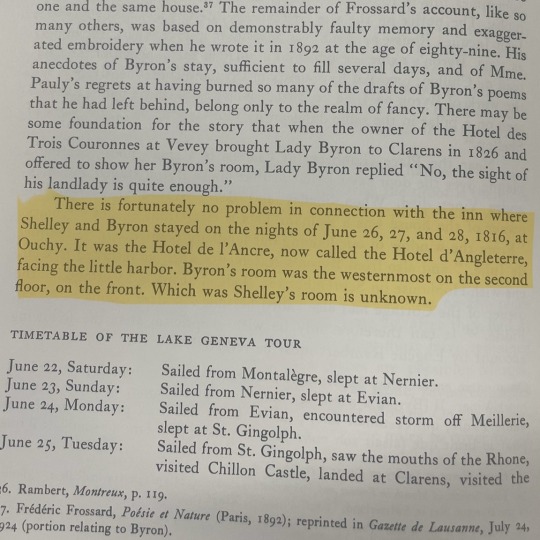
and they were roommates!
source: shelley & his circle: vol 4 (pforzheimer, 1961)
#for ease of access:#lake geneva 1816#shelley and byron's sailing trip#mary shelley's 1816 journal#lake geneva#the geneva squad
37 notes
·
View notes
Text
The Byron-Shelley circle reports from Lake Geneva, 1816…


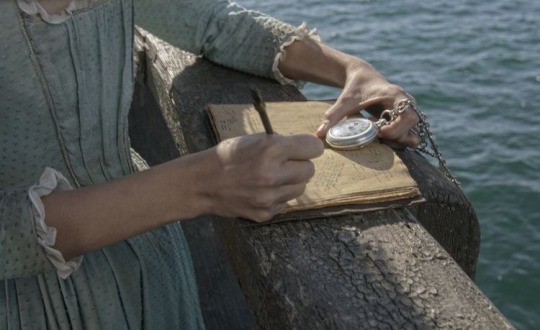



Mary Shelley’s journal entry for July 28th, 1816:
“Sunday, July 28 (Montalègre). — I read Voltaire’s Romans. Shelley reads Lucretius, and talks with Clare. After dinner he goes out in the boat with Lord Byron, and we all go up to Diodati in the evening. This is the second anniversary since Shelley’s and my union.”
Excerpt of a letter from Percy Shelley to his friend Thomas Love Peacock, July 28th, 1816 — he is still recounting the short trip he, Mary, and Claire took to Mont Blanc:
“We have bought some specimens of minerals and plants, and two or three crystal seals, at Mont Blanc, to preserve the remembrance of having approached it. There is a cabinet of histoire naturelle at Chamouni, just as at Keswick, Matlock, and Clifton; the proprietor of which is the very vilest specimen of that vile species of quack, that, together with the whole army of aubergistes and guides, and indeed the entire mass of the population, subsist on the weakness and credulity of travellers as leeches subsist on the sick.
The most interesting of my purchases is a large collection of all the seeds of rare alpine plants, with their names written upon the outside of the papers that contain them.
These I mean to colonise in my garden in England, and to permit you to make what choice you please from them. They are companions which the Celandine — the classic Celandine — need not despise; they are as wild and more daring than he, and will tell him tales of things even as touching and sublime as the gaze of a vernal poet.
Did I tell you that there are troops of wolves among these mountains? In the winter they descend into the valleys, which the snow occupies six months of the year, and devour everything that they can find out of doors.
A wolf is more powerful than the fiercest and strongest dog. There are no bears in these regions. We heard, when we were in Lucerne, that they were occasionally found in the forests which surround that lake.
Adieu. S.”
Undated letter sent from Claire Clairmont to Lord Byron next door, July 1816:
“Pray if you can send M. Polidori either to write another dictionary or to the lady he loves. I hope this last may be his pillow. & then he will go to sleep; for I cannot come at this hour of the night & be seen by him; it is so extremely suspicious. I have not seen you all day. I know you must be home by ten because Geneva shuts at that hour & I will be with you at a ¼ past ten, so remember.”
Another undated letter sent from Claire Clairmont to Lord Byron next door, July 1816:
“I would have come to you to night if I thought I could be of any use to you. If you want me or any thing of or belonging to me I am sure Shelley would come and fetch me if you ask him. I am afraid to come dearest for fear of meeting any one. Can you pretext the copying. Tell me any time I shall come & I will because you will have then made your arrangements. Every thing is so aukward. We go so soon. Dearest pray come and see us pray do. Good bye. I cannot find a wafer S — says he won't look at my note so don't be offended. Good bye dearest. Pray come & see us.”
In the summer of 1816 on Lake Geneva Percy Shelley, Mary Godwin (later that year, Shelley), their nanny Elise, their infant son William, and Mary’s step-sister Claire Clairmont, all lived at Maison Chapuis, less than a ten-minute walk from Byron’s much larger Villa Diodati next door. Claire and Byron had met in the past and began an affair in England that Spring. She fell in love with him and introduced him to Mary privately on April 21st. Earlier that day, Byron had signed the deed of separation from his wife, and on the 23rd he would sail away from England forever. Byron decided to vacation in Geneva while he planned his relocation to Italy that Fall. He took John Polidori with him as his traveling doctor while he recovered from a binge-drinking episode; Polidori was a recent medical school graduate who also aspired to be a writer. Claire urgently followed Byron and convinced Mary and Percy to join her, reliving the trio’s continental tour of 1814. After Byron and Shelley initially met at Geneva’s Hotel d'Angleterre, they decided to rent a boat together and managed to rent neighboring residences. The households would spend most of the summer together. Claire would give birth to her and Byron’s daughter that winter, and in subsequent years the Shelley and Byron households would follow each other around Italy.
#mary shelley’s 1816 journal#english literature#romanticism#literature#poetry#lord byron#aesthetic#dark academia#history#writing#percy shelley#mary shelley#claire clairmont#john polidori#gothic#gothic literature#lake geneva#lake geneva 1816#geneva 1816#geneva squad#frankenstein#the vampyre#books#bookblr#reading#english lit#romantic poets#young romantics#journals#letters
46 notes
·
View notes
Text


this is also where shelley and byron first met before they rented their respected villas! and where polidori first met the shelley squad. claire had already introduced byron to mary in london earlier that year. -- as the name of the hotel hints, it was the hotel where all the english stayed in geneva. -- i'm pretty sure the specific room they're referring to in this excerpt (the one byron stayed in on june 26-28 during his solo sailing trip with shelley) is that room there with the balcony in this google maps screenshot. i'd love to stay at the hotel but of course if money were no object i'd really love to rent the villa diodati instead

and they were roommates!
source: shelley & his circle: vol 4 (pforzheimer, 1961)
37 notes
·
View notes